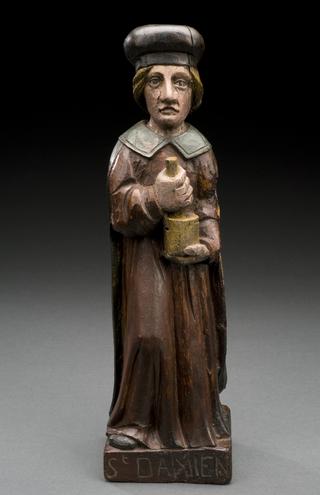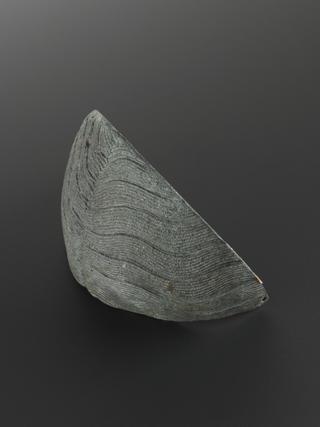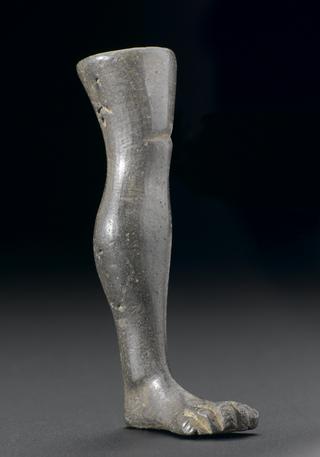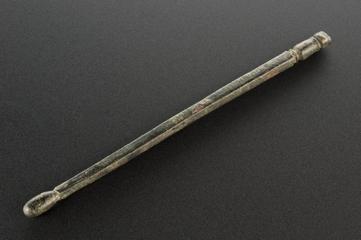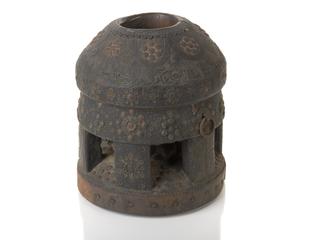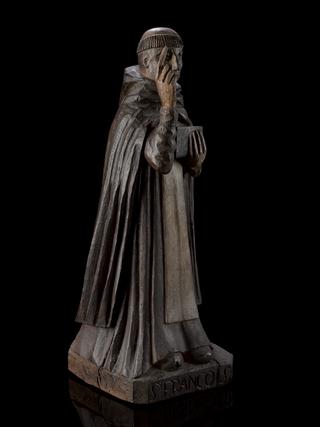
Alabaster phallus with bronze wings, Italy, 100 BCE-100 CE
- Made:
- 100 BCE-100 CE in Italy






Carved white alabaster phallus with bronze wings, Roman, from Italy, 100BC-100
Made from alabaster with bronze wings, this amulet in the centre was found in the ancient Roman city of Pompeii, which was entombed in volcanic ash when Mount Vesuvius erupted in 79 CE. The alabaster and bronze materials probably indicate that the amulet was owned by a wealthy person.
Phallic-shaped amulets were popularly worn as symbols of fertility and strength. They were essentially good luck charms. An amulet was, and for many people still is, believed to have magical and spiritual powers, bringing good fortune and good health and protecting against bad luck, which includes disease and sickness. It is shown here with two other examples (A97578 and A154056).
Details
- Category:
- Classical & Medieval Medicine
- Collection:
- Sir Henry Wellcome's Museum Collection
- Object Number:
- A67895
- Materials:
- alabaster, white and bronze
- type:
- amulet
- credit:
- Hotel Suisse
